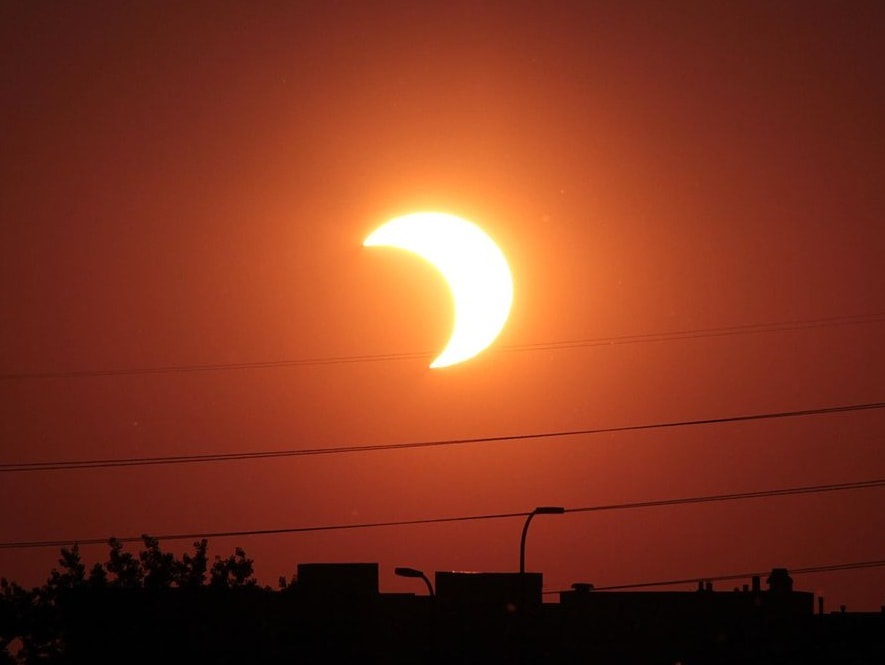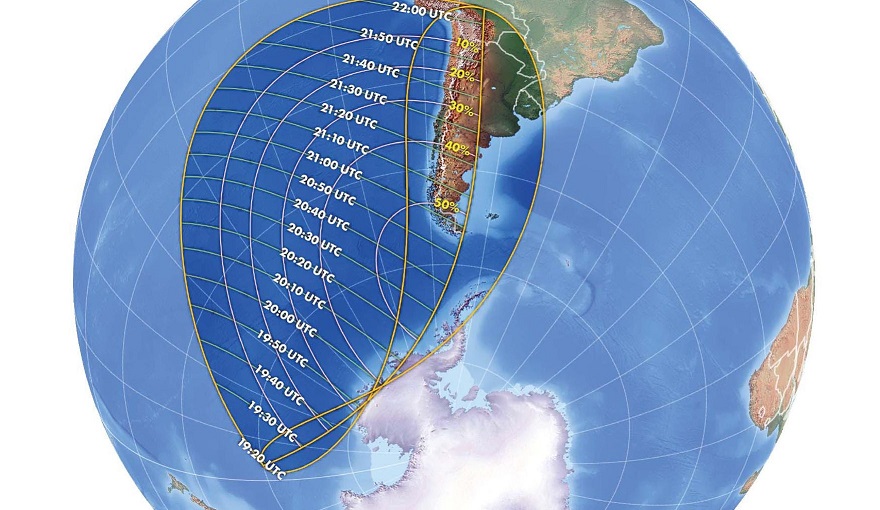The year 2022 from the point of view of solar eclipses does not look very successful. Only two are expected, and both will be partial and will be observed in relatively small areas in the circumpolar and middle latitudes. The first solar eclipse will take place on April 30. However, only residents and visitors of South America will be able to see it.

During total eclipses, the area of the earth’s surface where the solar disk is completely covered by the Moon has a relatively small size. The moon’s shadow often passes over oceanic expanses or over remote terrain. The visibility zone of partial phases is much larger, the inhabitants of densely populated areas of the planet see them much more often. But on April 30, 2022, the shadow of our moon will not hit the Earth at all. Penumbra will touch our planet at 06:45:13 p.m. world time (21 hours 45 minutes Kyiv time) near the coast of Antarctica, in the extreme south of the Pacific Ocean — this area is now considered to be a special Southern Ocean.

Moving further along the earth’s surface, the lunar penumbra will slightly “affect” the coast of Antarctica, cover Easter Island, which inhabitants will see the disk of the Sun, covered by the Moon by 20% of the diameter, and finally reach South America, where in southern Peru, Chile and western Argentina, the “cracked” solar disk can be seen shortly before it sunset over the horizon. The further south, the larger the maximum possible phases of the eclipse will be. Its largest phase — almost 64% — is expected in the Drake Strait, about 300 km northwest of the Antarctic Peninsula. On land, observers located on the island of Tierra del Fuego and nearby archipelagos will be most lucky. For them, the Moon will cover the Sun by 60-61%.
In the eastern part of Argentina, in the south of Bolivia, in Paraguay and Uruguay, small partial phases of eclipse can be noticed for a few minutes before the disappearance of the solar disk over the horizon. The lunar penumbra will leave the Earth at 10:37:55 p.m. UT near the Chilean coast. This is how the first eclipse of 2022 will end.
But, as already mentioned, it will not be the last. On May 16, the beginning of a total lunar eclipse should be visible in the western regions of Ukraine. And on October 25, residents of almost all of Europe, Northeast Africa and most of Asia can also observe the Moon against the background of the Sun. In Kyiv, the phase of this eclipse will exceed 60%.
Follow us on Twitter to get the most interesting space news in time
https://twitter.com/ust_magazine

